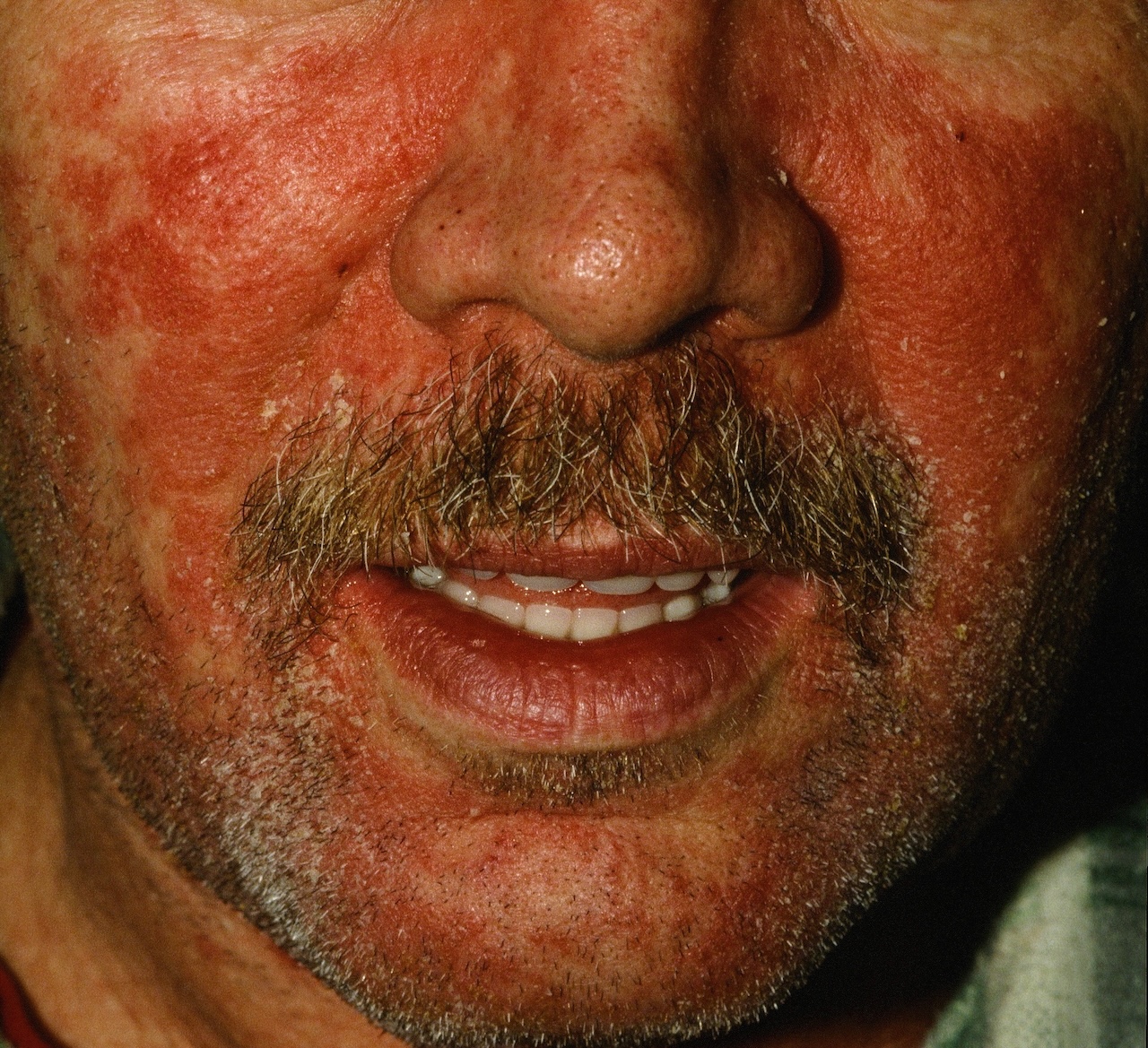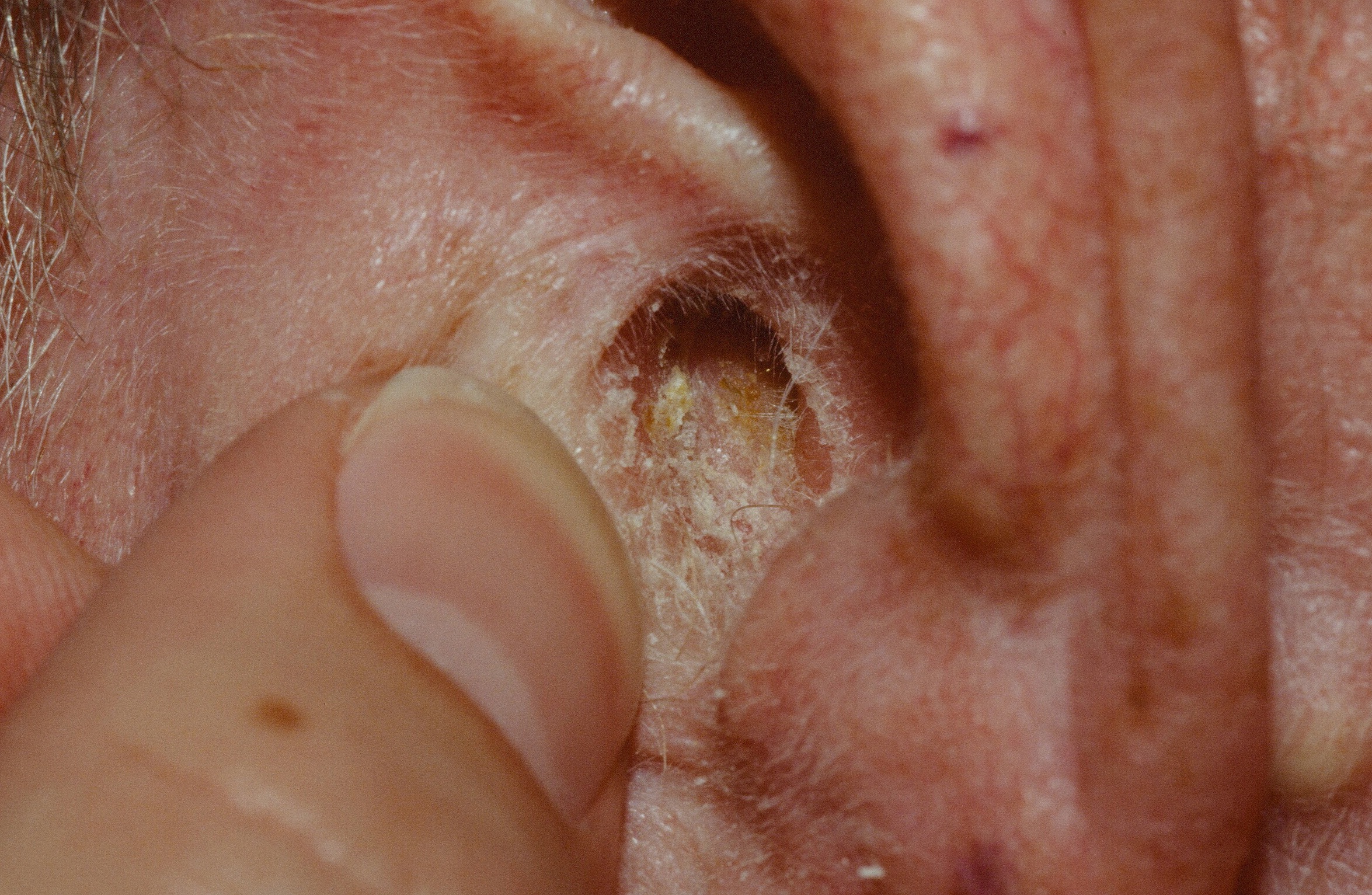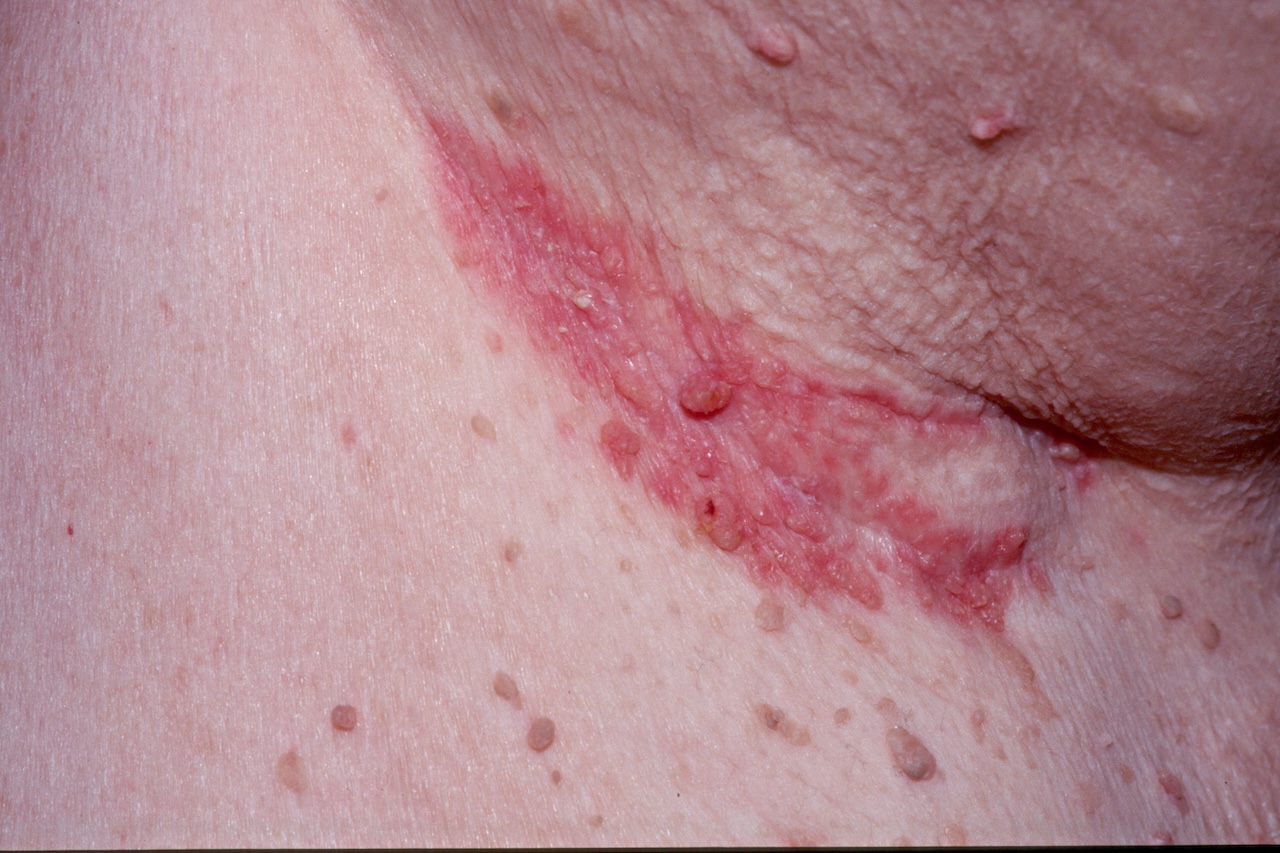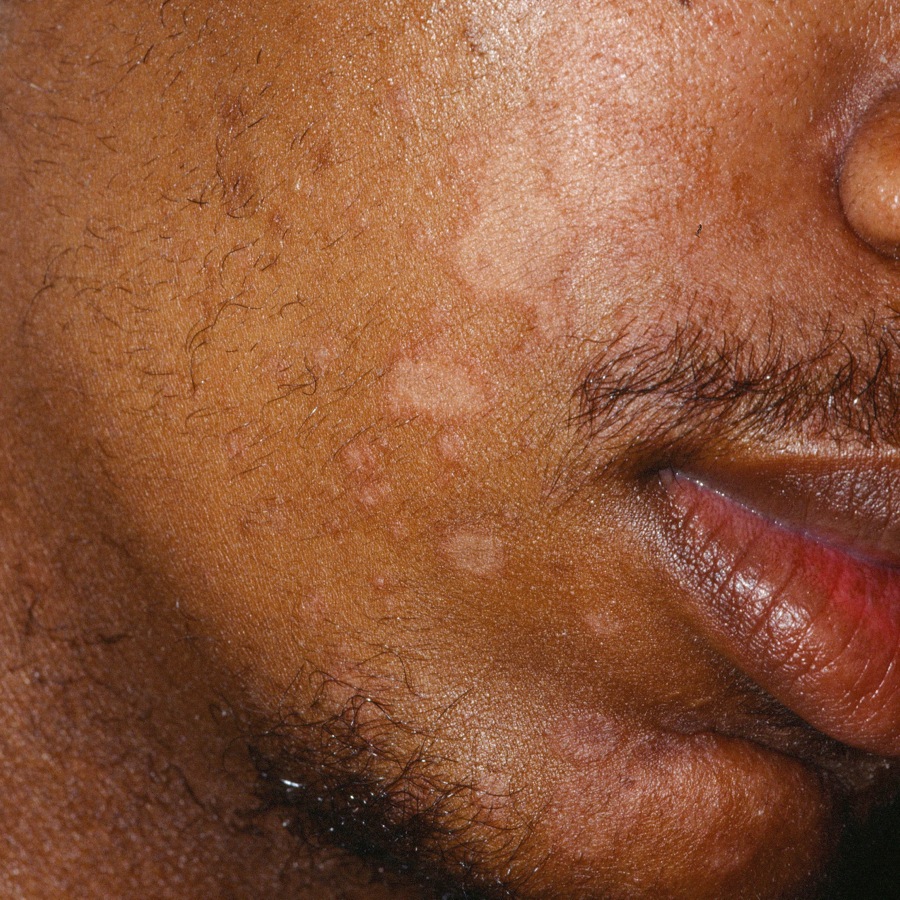SEBORRHEIC DERMATITIS PATIENT HANDOUT
Seborrheic dermatitis (SD) is akin to bad dandruff. The skin is red and scaly, most commonly on the scalp, but it may affect the face and other areas as well.
- People with SD often say, "My scalp itches." Or they may say their skin is "dry" and no amount of moisturizing helps. They may worry that other people think they have poor hygeine--which of course is not true.
- While the hair is normal, the scalp is scaly and mildly red.
- Many people not only have SD of the scalp, but have it on the face as well. It particularly likes the eyebrows and along the sides of the nose and the ears.
- Occasionally, the folds of the axilla may become involved.
- It is common with a peak of 20-50 years of age.
- It appears to be caused by an immune response to overgrowth of the fungus Malassezia (formerly Pityrosporum).
Treatment

Seborrheic Dermatitis of the Scalp
Many people with SD think shampooing less often is best, but the opposite is true. Frequent, e.g. daily, shampooing with a medicated shampoo is recommended. Shampooing infrequently, e.g. once a week, can make SD worse.
- Mild disease may be managed by shampooing alone. Ketaconazole (Nizoral) shampoo is to be used at least 3 times a week with a medicated shampoo (e.g. Selsun Blue, Head and Shoulders) on other days. Lather the scalp and any other areas that tend to be involved.
- For moderate disease, or where there significant itch, a topical steroid liquid is needed, (e.g. clobetasol solution) applied twice a day to the affected areas ("part the hair, dab it in; part the hair, dab it in").
- Don't scratch! (makes it worse).

Seborrheic Dermatitis of the Face
- For SD of the face, lather those areas with the medicated shampoo and applying a topical steroid (e.g. desonide cream, hydrocortisone 1% cream) twice a day.
- Once cleared, continue lathering daily with the shampoo, but use the topical medication only on active areas.

SD of the Ears
The ear canal may become red, scaly and itchy or the back of the ears may be involved. For seborrheic dermatitis of the ear canal, a mild to moderate topical steroid lotion or cream (e.g., desonide, triamcinolone) may be used daily initially and then 2-3 times a week as needed.

SD of the Chest
A red, scaly rash of the mid chest in a hairy man may occur, representing SD. A topical steroid liquid, e.g., triamcinolone lotion/solution, is helpful.

SD of the Axilla
A low-potency topical steroid, e.g., desonide cream, may be given. Some of the newer non-steroidal agents, e.g., Zoryve (roflumilast) would be excellent here. Zoryve foam, 0.3%, is indicated for the treatment of seborrheic dermatitis in adult and pediatric patients 9 years of age and older.

Seborrheic Dermatitis in Darker-Skin
- SD is common in those with darker-skin, in part because they typically shampoo less often and may apply oils to their hair and scalp.
- Unfortunately, the oil may aggravate SD by "feeding" the fungus (Malassezia). A focused application of oils on the distal hair shaft avoiding the scalp may be helpful.
- The skin may lighten or darken in response to the inflammation of SD. The key here is to control the SD, allowing the skin color to return to normal over time.
- The overall treatment of SD in darker-skin is the same, but with the understanding that you may find it more difficult to shampoo daily given your hair style. Leaving the ketaconazole shampoo on longer (once or twice a week) and reliance on topical treatments may be helpful.
Other Options
Zoryve (roflumilast) foam, 0.3%, is a new non-steroid medication and is indicated for the treatment of seborrheic dermatitis in adult and pediatric patients 9 years of age and older. It is excellent, but most insurances don't cover it unless you have failed a topical steroid.
Expectations
Seborrheic Dermatitis is chronic in nature so treatment needs to be ongoing.
Contact Your Doctor
Contact your doctor if your SD worsens, or fails to improve despite several weeks of treatment.
See also seborrheic dermatitis.
RegionalDerm
Who is Dr. White? | Privacy Policy | FAQs | Use of Images | Contact Dr. White
It is not the intention of RegionalDerm.com to provide specific medical advice, diagnosis or treatment. RegionalDerm.com only intends to provide users with information regarding various medical conditions for educational purposes and will not provide specific medical advice. Information on RegionalDerm.com is not intended as a substitute for seeking medical treatment and you should always seek the advice of a qualified healthcare provider for diagnosis and for answers to your individual questions. Information contained on RegionalDerm.com should never cause you to disregard professional medical advice or delay seeking treatment. If you live in the United States and believe you are having a medical emergency call 911 immediately.
